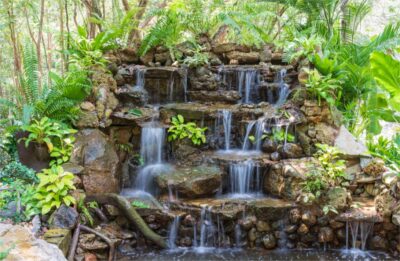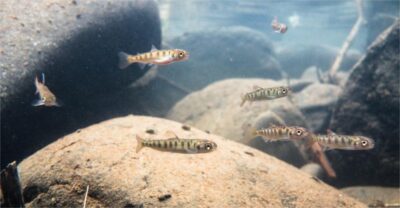How to set up a Pond Filter and Pump? Having a pond in your backyard can definitely attract many visitors due to its soothing, natural glow. Having a pond on your property is proven to plummet stress levels and proves as a sweet, aesthetic escape from your busy, monotonous routines.
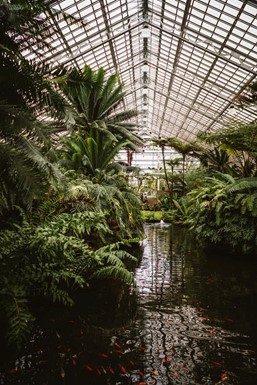
However, having a pond on your property comes with maintenance. Before diving deep into a pond maintenance routine, you must know the ins and outs of pond filters and pond pumps, and we’re here to enlighten you about just that!
While rocks, greenery, and other accessories breathe life and beautification into your ponds, pond pumps and pond filters are the backbones of every pond. To put it plainly out there – pond filters and pumps are essential if you plan on having a pristine, lively pond in your backyard.
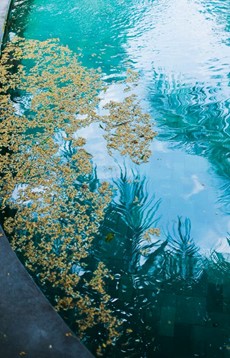
What is a pond filter?
A pond filter is essentially a filter (duh!) whose function is to remove algae and detritus from the pond, such as leaves, trash, and other organics—keeping the water clean and healthy. Large ponds or ponds with a large population of fish will require a filter system large enough to meet the needs of clearing the water.
Biological and mechanical filters are used to disintegrate chemicals present in pond ecosystems such as fish excrement, uneaten fish food, foliage, and other debris. Regulating ammonia (a kind of nitrogen) levels in pond water is critical to controlling algae development, and pond filters do just that.
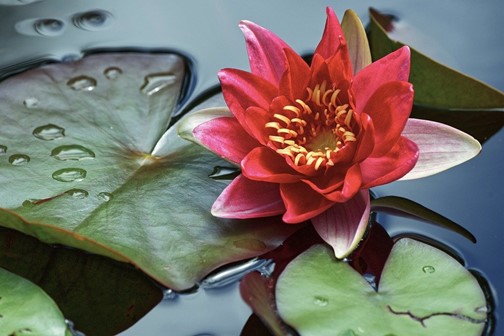
Does my pond need filtration?
The answer to this can be yes and no, both; it depends on whether you have a fish pond or not. If you don’t want to have any fish, or if you’re making a biodiverse pond with a lot of plants and only a few fish, you can skip the filter and instead aim to achieve a natural balance through flora and greenery.
If you plan on not adding a filter to your pond, you must add a sufficient number of oxygenating plants and flora to suffice for the absence of a pond filter. You’ll need a lot of plants, possibly enough to cover two-thirds of the pond’s surface.
In conjunction with naturally occurring beneficial bacteria in the pond, these plants will subsequently utilize and digest any toxins left by fish and decomposing biosolids, resulting in a healthy natural balance and a clear pond. It is critical to note that the plants must be well entrenched before progressively introducing fish. It may take at least eighteen months to develop a naturally balanced pond.
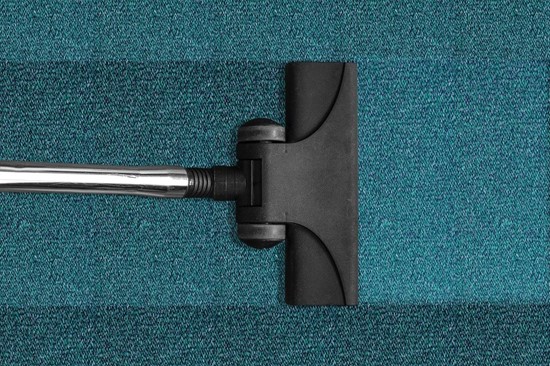
Biological pond filtering
Biological pond filters use good bacteria and microorganisms to filter the pond water for you and your lively population of pond fish—biological filters function as a pond’s micro-sewage infrastructure. Simply said, the media within the filter provides a large surface area that becomes home to millions of beneficial microorganisms.
The beneficial bacteria used in biological pond filters even break down toxins and detritus that are invisible to the naked human eye. The excess fish waste, excess food, and other toxins are a cause of extra ammonia levels inside a fish pond.
The bacteria in biological filters break down the ammonia to nitrite, which is further broken down into nitrates. The pond plants use nitrates and aren’t toxic to the wildlife thriving inside your ponds either (except when in high concentration).

What is a pond pump?
A pond pump is typically the very first piece of equipment added to a garden or fish pond; it moves water to a filter and helps maintain the pond healthy and fresh. Pond pumps come in a variety of styles, including fountain pumps and solids handling pumps, each of which serves a distinct purpose.
A pump helps to maintain the water clear and oxygenated, and it is required for any pond with more than one or two goldfish, even if it contains a lot of flora.
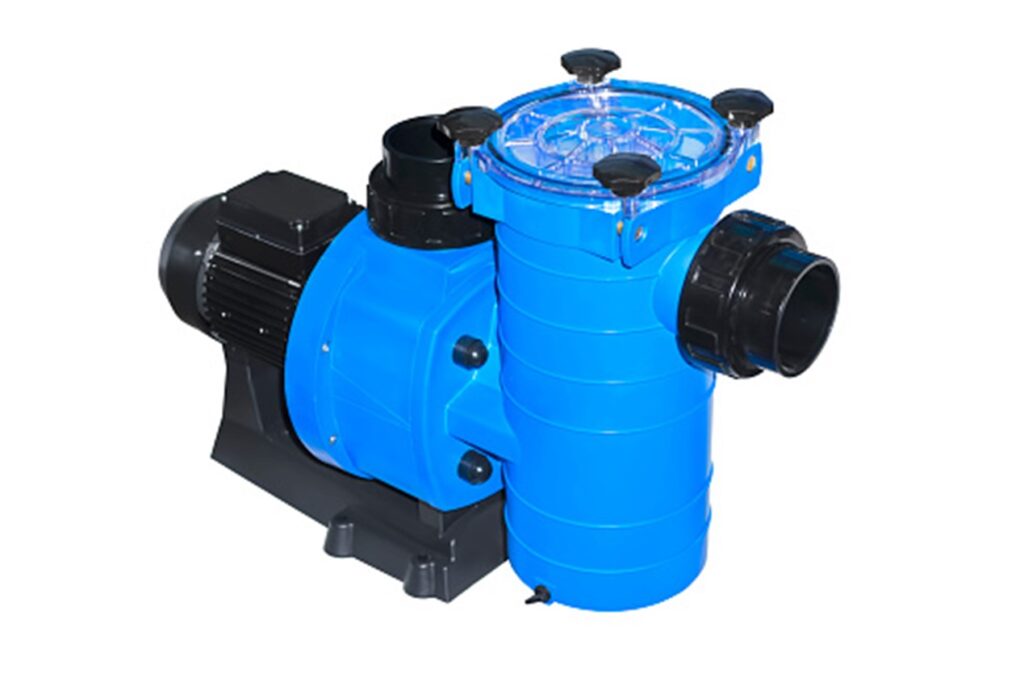
Pond Filters – How to install them?
Like every other piece of pond equipment, there are many pond filters available in the market to choose from.
Box Filters
Box filters are basic plastic containers that packs various mechanical and biological membrane technology to filter pond water. A pump in the pond pumps water into the box, which is linked to the pump by a pipe.
Pond water is pumped into the box’s top and drops through the filter material by gravity. Physical waste is generally caught in sponges before passing through a biological medium containing helpful bacteria and returned to the pond.
Box filters are efficient and straightforward, and one with mechanical and biological media will be capable of sustaining fish, breaking down waste, and removing debris from the water. On the other hand, a box filter will not prevent green water unless it includes an ultraviolet clarifier (UVC) or a separate UVC is installed in the pipework between the pump and the filter.
How to install a box filter?
Box pond filters are essentially placed above the pond, and the idea behind them is to use the science of gravity to do the work for them. If you have a ground-level pond, you can adjust your box filter at the edge of your pond.
While setting up a box filter, extra care must be paid to its placement in your pond. It would be best if you positioned your box filter on a sturdy, level surface. The order of outlet pipes is also critical here; you don’t want outlet pipes that are too long. Also, make sure the outlet pipe doesn’t feature a too small diameter because if it does, your pond filter is most likely to flood and spill its remains, and you don’t want that.
Pressurized Filters
Pressurized filters are containers with a thin cover that is cylindrical in shape. They, like box filters, include biological and mechanical filter media, are fed by a pond pump, and types with built-in UV are available to prevent green water.
However, unlike box filters, water departs the filter through pressure rather than gravity. This means that the filter may be positioned away from the pond or at the foot of a waterfall, and an extra pond hose can be used to bring water up to feed the cascade. Pressure filters can even be partially buried up to their lids for the subtlest pond filter arrangement.
How to install a pressurized filter?
Unlike box filters, pressurized filters can be almost placed anywhere, and placement won’t be a problem for these bad boys. They are flexible when it comes to their positioning and don’t compromise on their pond water filtration qualities, either.
They can be planted firmly to their covers in the ground or put far away from a pond or waterfall, under a tree, or in a shed. This makes them particularly handy when you need a waterfall but don’t want the filter to be noticeable or ruin the overall vibe of your pond.
Some pressurized pond filters feature a third exit for flushing wastes. When flushed, this can be left unadorned, with unclean water spraying a short distance into the yard, or a hose can be linked-to carry the water to a drain or a flowerbed.
Tips on installing and maintaining a pond filter for a healthy pond
- For filters relying on gravity for pond filtration, such as box filters, make sure the outlet point is at a height that is greater than the point of return.
- Gravity outlet pipes should be as short as possible.
- The most potent inlet hose should be used to ensure effective pond filtration.
- Run the filters 24 hours a day, especially during summers, springs, and autumns.
- Test your pond water regularly. Most of the contaminants are invisible to the naked eye and might falsely exhibit your pond water as clean.
- Use beneficial bacterial supplements to help your filters do their jobs.
- Don’t rush things – even the most expensive and efficient pond filters take weeks to become biologically active.

Pond Pumps – how to install them?
Just like pond filters, you’ll find a lot of pond pumps on the market.
Submersible Pumps
Submersible pond pumps are particularly placed underwater, hence their name. These are the most typical type of pond pumps that you’ll find on the market.
Submersible pumps have a tightly sealed engine that keeps water out. Modern pumps are enclosed in a strainer cage to prevent significant contaminants from entering the chamber and clogging the impeller. Older pumps used foam inside the strainer cage, but this became clogged over time, hence beating the purpose of having a pond pump.
Dry-mounted pumps
Some pumps are designed to be dry-mounted (or in-line). This implies that, under the appropriate conditions, the pump may be put outside of your pond.
The appropriate installation of pond pumps
Submersible pond pumps should be placed at the bottom of the pond but should be easily accessible for maintenance. Attaching a line or rope to the pump allows it to be easily pulled out of the pond. NEVER raise a pump by its electrical cable if you wish to stay clear of deadly electric shocks. Ideally, maximal circulation should be achieved by incorporating as much pond water as feasible.
If there is a considerable amount of pond sludge in the pond, it may be essential to elevate the pump off the pond floor to avoid the pond becoming clogged with mud and debris. This may be accomplished by positioning a stone slab on the bottom of the pond and placing the pump on top of it.
Dry pond pumps, on the other hand,can be placed anywhere near your pond as long as they have a robust, working connection to your pipeline.
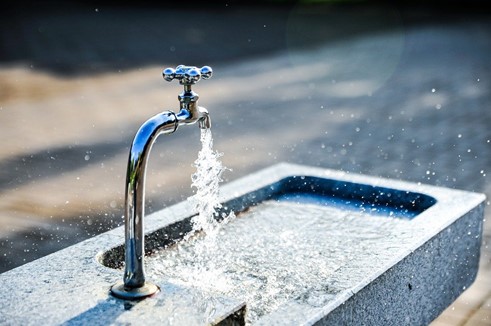
Ending Note
If you don’t wish to add a pond filter or pump to your pond, it’s totally fine until you don’t have pond fish. However, if you want to add fish to your pond, you must reconsider your decision of not having a pond filter in your fish pond. No amount of greens can abate the additional amounts of waste that are accompanied by a thriving population of fish.
Pond pumps and filters are absolutely a must if you plan to have a pond with pristine waters that boast of a well-maintained pond. By now, you must now know how to install pond pumps and pond filters into your pond. Go do it now; your pond deserves it!
FAQs
Does a pond pump need a filter?
Filtration systems are not always included with pumps. Many kinds simply circulate the water to maintain oxygen levels and to create the soothing sound that many homeowners associate with ponds. It’s a good idea to use a pump with a filtration system if your tiny fish pond gets mucky rapidly.
Should a pond pump be at the bottom?
The pump should be placed at the bottom of the pond but should be easily accessible for maintenance. Attaching a line or rope to the pump allows it to be easily pulled out of the pond; never raise a pump by its electrical cable as this is harmful. Before turning on the pump, make sure it is full of water.
How do you keep pond water clear without a filter?
- Utilize Pond Plants.
- Provide aeration and oxygenation.
- Use Beneficial Bacteria as a supplement for your pond’s cleaning mechanism.
- Excess Bottom pond sludge should be removed.
- Change the water frequently if you have fish.
Can a pond pump be laid on its side?
Yes, it may be suction cupped to the side of a tank if desired, and it doesn’t matter as long as it’s underwater. Just be sure to maintain the grates clean at all times, or else this device will fail and die.
Can a pond pump be too powerful?
An overly powerful pump would stir the water more vigorously than required, perhaps harming any vegetation or fish in the pond. The water must only be circulated, not heaved.
_______________________________________________________________________
Aquigarden is reader-supported by Adsense & Amazon LLC. When you buy throug links on our tips site, we may earn an affiliate commission. Learn more. Aquigarden is a participant in the Amazon Services LLC Associates Program, an affiliate advertising program designed to provide a means of sites to earn lead fees by linking to Amazon.com
We only give our own opinion. We only give our own opinion. We do not accept any liability. We recommend that you always call in a professional in pond & pool.








